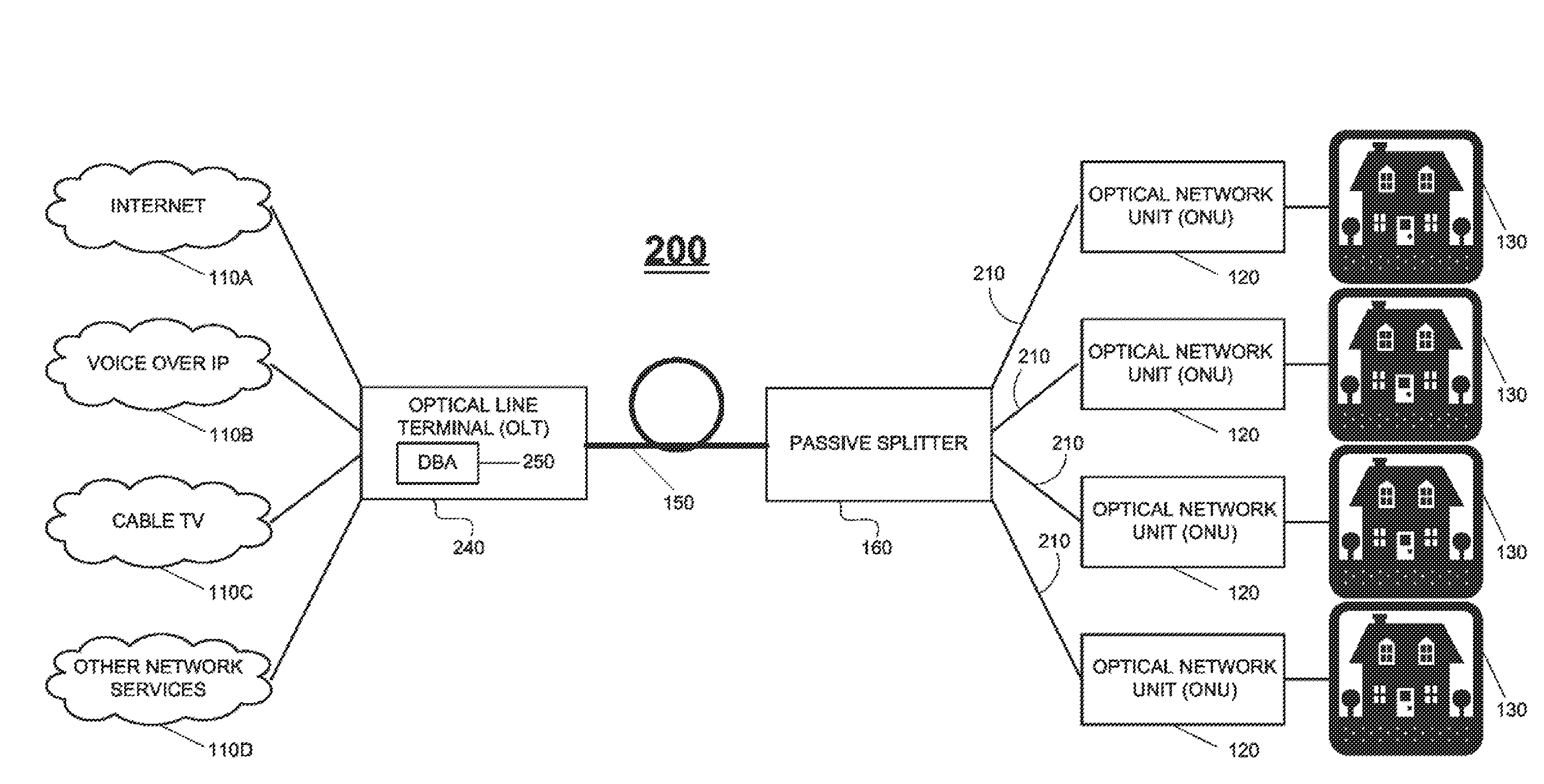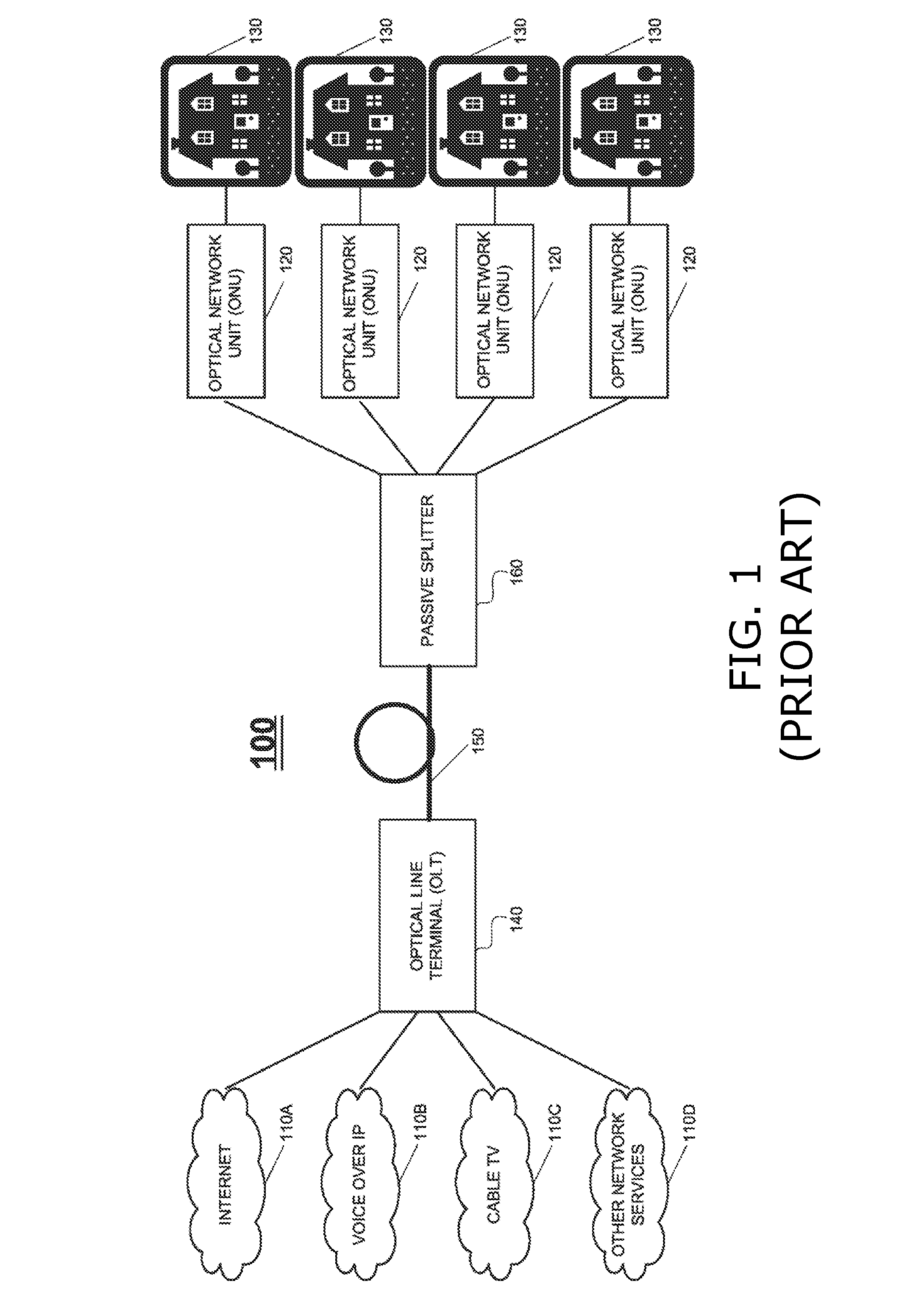Dynamic bandwidth allocation for upstream transmission in passive optical networks
a technology of dynamic bandwidth allocation and upstream transmission, applied in the field of passive optical networks, can solve the problems of inability to compensate for periods of unused guaranteed bandwidth, inability to degrade the overall performance of pon b>100/b>, and inability to provide switching or buffering capability of splitter b>160/b>, etc., and achieve the effect of efficient bandwidth allocation
- Summary
- Abstract
- Description
- Claims
- Application Information
AI Technical Summary
Benefits of technology
Problems solved by technology
Method used
Image
Examples
Embodiment Construction
[0018]Aspects of the present invention relate to efficient bandwidth allocation for PONs, using time-division multiplexing. The bandwidth allocation is required to comply with service level agreements (SLA) corresponding to the respective ONUs.
[0019]Reference is made to FIG. 2, which is a simplified block diagram of an enhanced PON 200, with dynamic bandwidth allocation in accordance with an embodiment of the present invention. PON 200 includes an OLT 240 with a novel dynamic bandwidth allocation (DBA) module 250. Operation of DBA module 250 is described in detail hereinbelow.
[0020]Conventional PONs operate at 1 Gbit / s rates, but PONs with 10 Gbit / s rates will be available in the near future. The 10 Gbit / s PONs will accommodate both 1 Gbit / s and 10 Gbit / s ONUs 120. I.e., some of the fibers 210 in FIG. 2 will have 1 Gbit / s transmission rates, and others of the fibers 210 will have 10 Gbit / s transmission rates. Systems and methods of the present invention are also of advantage to such...
PUM
 Login to View More
Login to View More Abstract
Description
Claims
Application Information
 Login to View More
Login to View More - R&D
- Intellectual Property
- Life Sciences
- Materials
- Tech Scout
- Unparalleled Data Quality
- Higher Quality Content
- 60% Fewer Hallucinations
Browse by: Latest US Patents, China's latest patents, Technical Efficacy Thesaurus, Application Domain, Technology Topic, Popular Technical Reports.
© 2025 PatSnap. All rights reserved.Legal|Privacy policy|Modern Slavery Act Transparency Statement|Sitemap|About US| Contact US: help@patsnap.com



